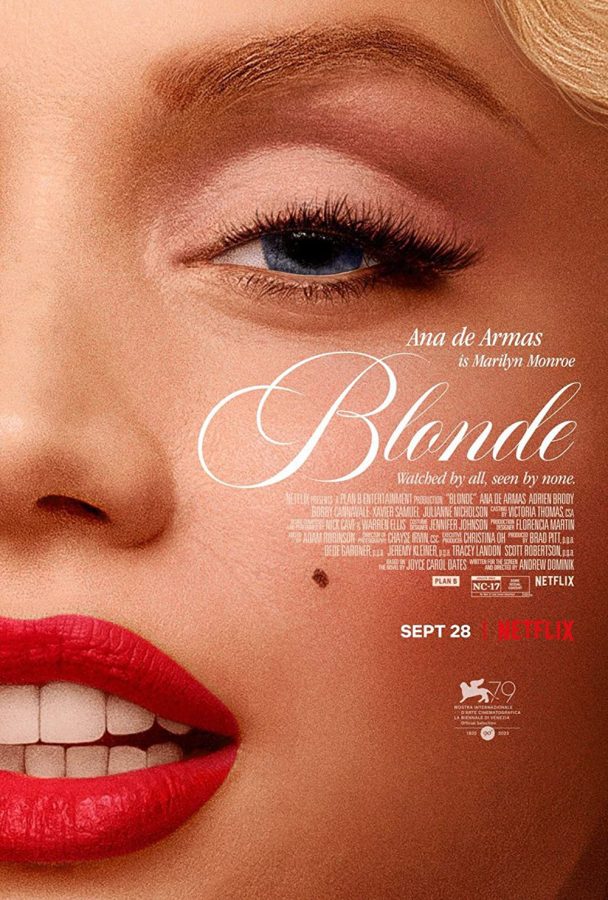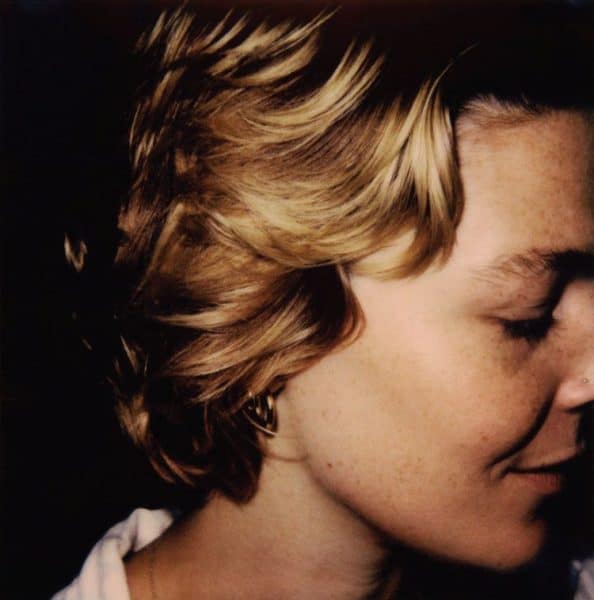Culture Pick: “Blonde” film does Marilyn Monroe little justice
November 16, 2022
As the 21st century has progressed, the emergence of the biographical motion picture, or biopic, film genre has paced evenly beside. The Nashville Film Institute defines a biopic as a movie that tells the story of a real, nonfictional person’s life.
Often, biopics are created after the subject has passed. Occasionally there are exceptions, such as the 1993 Tina Turner biopic “What’s Love Got to Do With It,” which stars Angela Bassett as Turner.
As society heads further into the 21st century and Generation Z becomes more prominent in society, the development of certain biopics edge closer to a period in which those watching it were not alive during the prime of the film’s subject. Notably, the upcoming Fred Astaire biopic will star Tom Holland, who was born in X, as Astaire, who passed away in 1987.
“Blonde,” a biopic directed by Andrew Dominik about the life of Marilyn Monroe, played by Ana de Armas, stirred up a significant amount of controversy before being released on Netflix on Sept. 16.
Debate surrounds these movies, with many questioning if it’s ethical to not completely cover the entire truth of someone’s life. In addition, the production of certain biopics might go against the wishes of the subjects of said films, such as Astaire, who had expressly mentioned he never wanted to be on the big screen.
“Blonde” was advertised as a reasonably accurate description of Monroe’s life, but it is actually based off a fictional novel by the same name written by author Joyce Carol Oates.
According to Oates’ author’s note within the novel, her words are “radically distilled life in the form of fiction.”
“Blonde” was the second adaptation of Oates’ book, the first done back in 2001 by the same name. 2022’s“Blonde” received a 42% on Rotten Tomatoes, 18% lower than its predecessor.
Part of the movie’s lower-than-average performance may be credited to the inaccurate depiction of Monroe.
“Watching ‘Blonde,’ it feels like Oates and Dominik hate Marilyn Monroe. In this film’s telling, she is doomed from the beginning, made of pain. You watch Ana de Armas’s Marilyn and think: where is the drive that must have existed?” said Tanya Gold in an article for The New Statesman.
One of the main critiques of de Armas’s depiction of Monroe is the lack of Monroe’s vibrant personality.
There is never a time within the film in which viewers see Monroe portrayed in a positive light. Dominik’s choice to include highly graphic sexual scenes that were unnecessary to the development of the plot was also a central critique. For some, these scenes were more of a deterrent to watching the movie than any review may have been.
In an article for Newsday, critic Robert Levin said in its resolute focus on just one aspect of what being Marilyn Monroe must have been like, the movie simply caricatures her once again.
But, of course, it is not just “Blonde” that has an issue with caricaturing the subject. This is the case with a few biopics that have been made, such as “Wired” and its portrayal of John Belushi, “The Blind Side” about Michael Oher, and “The Green Book” with its look into the life of Frank Vallelonga.
Still, the balance between stereotypes and reality is the difference between a successful biopic and “Blonde.” Ultimately, both “Blonde” and other adaptations did not perform well because they lacked truth and respect for their subjects.
Marilyn Monroe passed in 1962, and since then, there have been 16 films made about her, most labeled as biopics. Perhaps, in the 21st century, filmmakers should consider putting the idea of producing to rest and allow Monroe’s legacy as an American icon to speak for itself.











